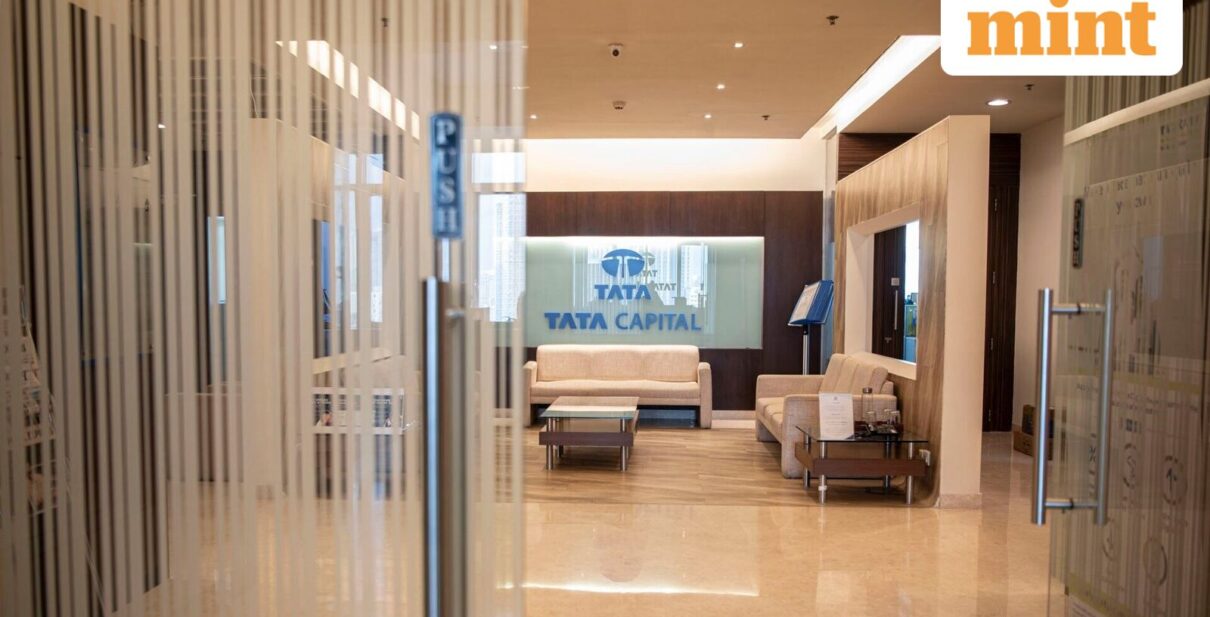Tata Capital, the Tata Group NBFC initial public offering (IPO), is set to open for bidding on Monday, October 6, and will remain available to investors until Wednesday, October 8.
The company aims to raise ₹15,512 crore through this IPO, which is a combination of fresh issue of 21 crore shares aggregating to ₹6,846 crore and offer for sale of 26.58 crore shares aggregating to ₹8,665.87 crore.
The ₹310– ₹326 per share”>price band for the IPO is fixed at ₹310– ₹326 per share. The minimum lot size for retail investors is one lot, consisting of 46 shares, requiring a minimum investment of ₹14,996. Investors can apply for a maximum of 13 lots.
The allotment of the issue is likely to be finalized on October 09, and the shares are scheduled to be listed on both BSE and NSE, with a tentative listing date of Monday, October 13.
Tata Capital is a diversified non-banking financial company (NBFC) in India, offering a wide range of financial products and services across retail, SME, and corporate segments. Its consumer finance business provides personal loans, two-wheeler and four-wheeler loans, and loans against property, catering to both salaried and self-employed individuals.
The company also offers working capital and term loans, as well as structured financing solutions to small and medium enterprises and corporates, helping businesses meet their capital requirements and expansion plans.
As the IPO is set to open next week, potential investors should also be aware of the key risks outlined by the company in its Red Herring Prospectus (DRHP). In this article, we will break down some of these risks.
Key risks
Credit Risk from Stage 3 Loans: The company’s gross stage 3 loans comprised 2.1%, 1.7%, 1.9%, 1.5%, and 1.7% of its total gross loans as of June 30, 2025; June 30, 2024; March 31, 2025; March 31, 2024; and March 31, 2023, respectively.
Risk from Unsecured Loans: Unsecured gross loans to the company’s retail, SME, and corporate customers, which carry higher credit risk, comprised 20.0%, 22.4%, 21.0%, 24.5%, and 23.1% of its total gross loans as of June 30, 2025; June 30, 2024; March 31, 2025; March 31, 2024; and March 31, 2023, respectively.
Funding and Borrowing Risk: The company’s average cost of borrowings ratio was 7.8%, 7.8%, 7.8%, 7.3%, and 6.6% for the three-month periods ended June 30, 2025; June 30, 2024; and fiscals 2025, 2024, and 2023, respectively.
If the company is unable to secure funding on acceptable terms and at competitive rates when needed, including due to any downgrade in its credit ratings, it could have a material adverse effect on its business, results of operations, cash flows, and financial condition
Interest Rate Volatility: The company is affected by volatility in interest rates for both lending and treasury operations, which could cause earnings and associated key financial metrics to vary
Foreign Currency Borrowing and Hedging Risk: The company’s total foreign currency borrowings as a percentage of total borrowings were 12.3%, 8.1%, 11.4%, 7.3%, and 5.9% as of June 30, 2025; June 30, 2024; March 31, 2025; March 31, 2024; and March 31, 2023, respectively.
The hedging arrangements entered into with respect to fluctuations in interest rates or currency exchange rates may be inadequate and are subject to default risk.
SME Loan Sector Risk: Loans to small and medium enterprise businesses accounted for 26.2%, 25.6%, 26.2%, 29.0%, and 32.6% of total gross loans as of June 30, 2025; June 30, 2024; March 31, 2025; March 31, 2024; and March 31, 2023, respectively.
The performance of these loans depends on the SME sector in India, which may be affected by government policies and statutory or regulatory reforms.
Regulatory Compliance Risk: As a non-banking financial company (NBFC), the company is subject to regulations and periodic inspections by regulatory authorities in India. Past observations by the RBI and NHB have noted certain non-compliances, and any future non-compliance may result in penalties, restrictions, or cancellation of licenses.
ESOP Expenses Risk: Employee stock option plan (ESOP) expenses were ₹103.5 million, ₹78.7 million, ₹376.5 million, ₹341.7 million, and ₹214.8 million for the three-month periods ended June 30, 2025; June 30, 2024; and fiscals 2025, 2024, and 2023, respectively. Granting options may result in a charge to the profit and loss account, which could adversely impact net income.
Capital Adequacy Requirement Risk: The company is required to maintain applicable capital adequacy ratios. Failure to comply with the ratios prescribed by the Reserve Bank of India could adversely affect the business, results of operations, cash flows, and financial condition.
Interest Income and Margin Risk: The company reported Net Interest Income of ₹28,662.1 million, ₹24,540.0 million, ₹106,901.3 million, ₹67,982.4 million, and ₹53,102.6 million, with an average cost of borrowings ratio of 7.8%, 7.8%, 7.8%, 7.3%, and 6.6%, and a net interest margin of 5.1%, 5.2%, 5.2%, 5.0%, and 5.1% for the three-month periods ended June 30, 2025; June 30, 2024; and fiscals 2025, 2024, and 2023, respectively.
Any decline in interest income or rise in borrowing costs could reduce net interest income and margin, adversely impacting profitability and overall results of operations.
Disclaimer: This story is for educational purposes only. The views and recommendations made above are those of individual analysts or broking companies, and not of Mint. We advise investors to check with certified experts before making any investment decisions.




